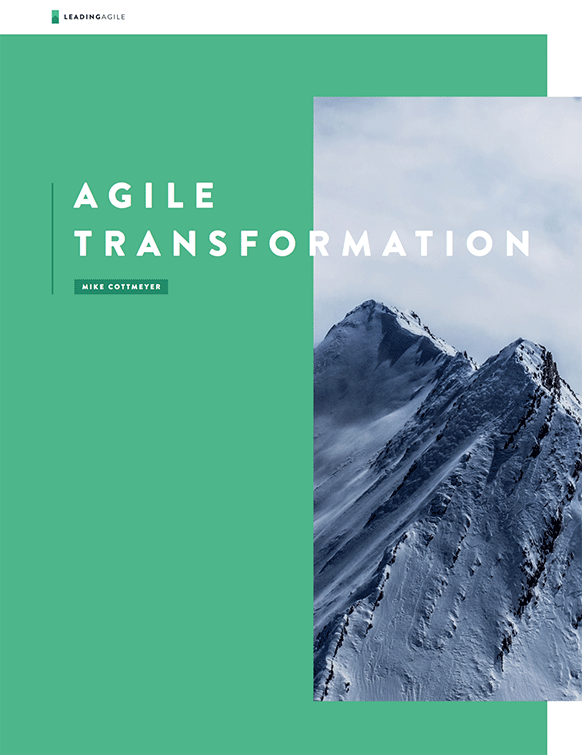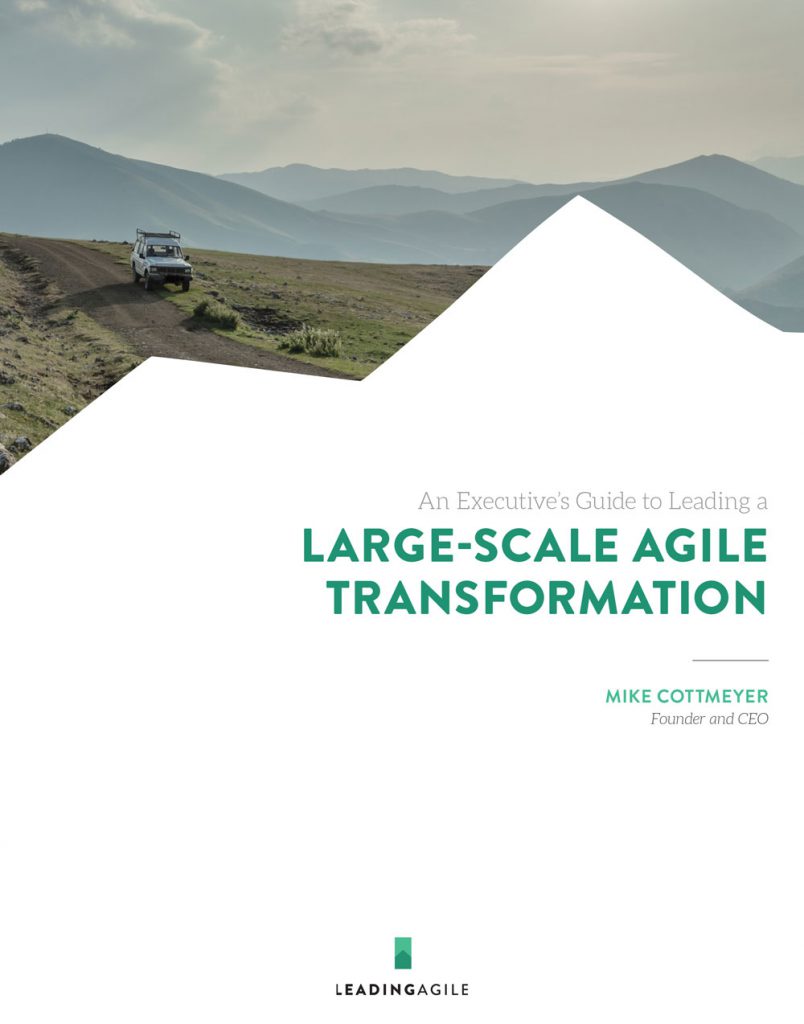Five Ways OKRs Accelerate Your Agile Transformation

Achieving lasting change to an organization through an Agile Transformation or increasing Business Agility is not for the faint of heart. There are tomes written about the best way forward. Stages, steps, processes–and in many cases—the “solution” is to plan more, track more, and deliver on time.
In contrast, Business Agility is intended to be flexible. A goal of Agile Transformations is, in part, to gain the ability to adapt to what can be empirically shown to be true. While it is tempting to put a straitjacket on an organization and make sure that what is delivered is what was promised, the reality is that we may not actually want what we originally requested. The best solution may emerge as the problem and solutions are explored.
Most organizations need to answer: how might we reach a business or product outcome when we may not understand what the outcome will look like? The answer lies in deciding where to constrain versus encourage action and, in fact, mandate creativity, complex thinking, and integrated solutions. No one can mandate creativity. However, we can set the stage for creativity to emerge.
MOVING FROM PROJECTS TO PRODUCTS
We are working with a large IT organization that has been working diligently to create a predictable software delivery pipeline for the last few years. To manage the pace of change effectively, we have to work through each part of it a few teams at a time. Until recently, financing for the organization came through business cases and project-based funding. The development groups relied on project-style requirements to tell them what to do next. The result was a software development organization that was Agile – but Business Agility was sorely lacking.
In response, the IT organization embarked on a move from Projects to Products. This shift could have led the organization to a free-for-all where teams worked on what they thought was most valuable. The trick was to create responsible empowerment across all groups. If groups weren’t aligning to projects, what were they aligning to? And ultimately, whether we have a product or project focus, the goal is to deliver on strategic initiatives or bring to fruition strategic intent.
INTRODUCING OKR: OBJECTIVE & KEY RESULT
One popular method of aligning work to strategic intent is the OKR or Objective and Key Result.
In this last iteration of organizational change, the move was towards delivering more valuable work. The valuable work was defined as 1) strategically aligned and 2) delivering value to users and customers. LeadingAgile chose the humble yet powerful OKR (Objective and Key Result) format as the way to have a conversation between those working on software and the other levels of the organization tracking value.
PARTS OF THE OKR
OKRs have two main components:
Objective: What aspirational state do you want to reach?
Key Results: What is the measurable change in behavior or outcomes that the organization makes progress towards the objective? Behavior changes are not the act of ‘doing’ something. They reflect the change in behavior of the groups receiving the work.
Other components can be added depending on the situation:
Initiatives: A set of actions to achieve key results
Outcomes: Lagging indicators that tell you the score once an objective is complete.
FIVE PRINCIPLES OF OKR
It’s the underlying principles of OKRs that make them great vehicles for communicating intent from the folks creating them. Here is a breakdown of why OKRs have become so popular – and are a significant component to add to your work expanding Business Agility.
-
OKRs are created by the people who will do that work.
- The people who do the work generate the OKRs. Yes, they undergo a review and discussion process, but they allow the person or group writing the OKR to determine the best way forward. When people choose their way forward, they are more motivated to complete the job well.
-
Management can see the objectives that each part of the organization believes are most valuable to work on and prioritize.
- OKRs bring excellent transparency to what each part of the organization is working on. Management can review that the components create a complete picture of all the aspects that groups are working with. And if necessary, they can locate specific areas where objectives are not aligned.
-
Objectives are not hierarchical.
- Most organizations rely on cross-functional cooperation. OKRs can mirror that reality. One part of an organization can create objectives and key results linked to OKRs from anywhere within the organization. As long as it’s agreed that the objective is valid and valuable, where the work comes from is irrelevant.
-
Objectives are written in the problem space.
- The objective says: we will solve this problem. It leaves the detailed execution to emerge as solutions develop and evolve. This flexibility of solutions generates the Business Agility of the OKR driven organization.
-
Key results are created with leading indicator metrics built into them.
- Keeping track of progress as work proceeds is another important reason OKRs are valuable. At each moment, the team can review how much progress has been made towards a key result and adjust effort and focus.
OKRS IN PRACTICE
Here’s an example of how objectives and key results can start and evolve in practice:
If my objective is to increase sales effectiveness, then one key result could start with attending training. In this example, attending training is considered an output. It states what I did but doesn’t tell me anything about the outcome. A way to align with the intent of the key result is to ask what results I want from attending training. Possible results could be using five new training techniques or having a 10% higher close rate on sales calls measured monthly.
Through questioning motives and targeting outcomes, the key results focus on any important work or effort.
In the final key results, you are able to track progress. The key results create actionable intent towards an objective that everyone agrees is in the organization’s interest. It also engages people in different chunks of work that are growth-oriented. It’s a win/win situation.
As you move through your Agile Transformation towards Business Agility, consider adopting OKRs as a tool to increase value and track progress over time.




